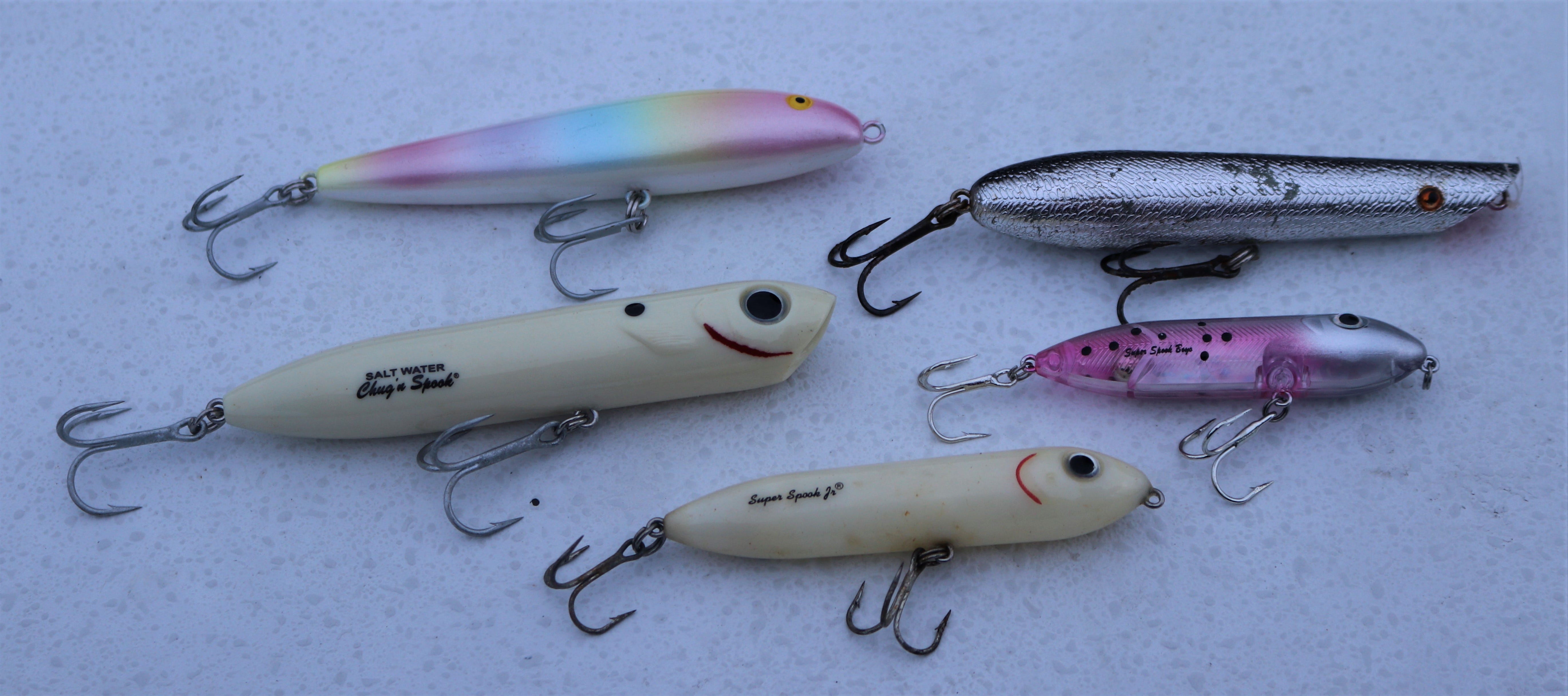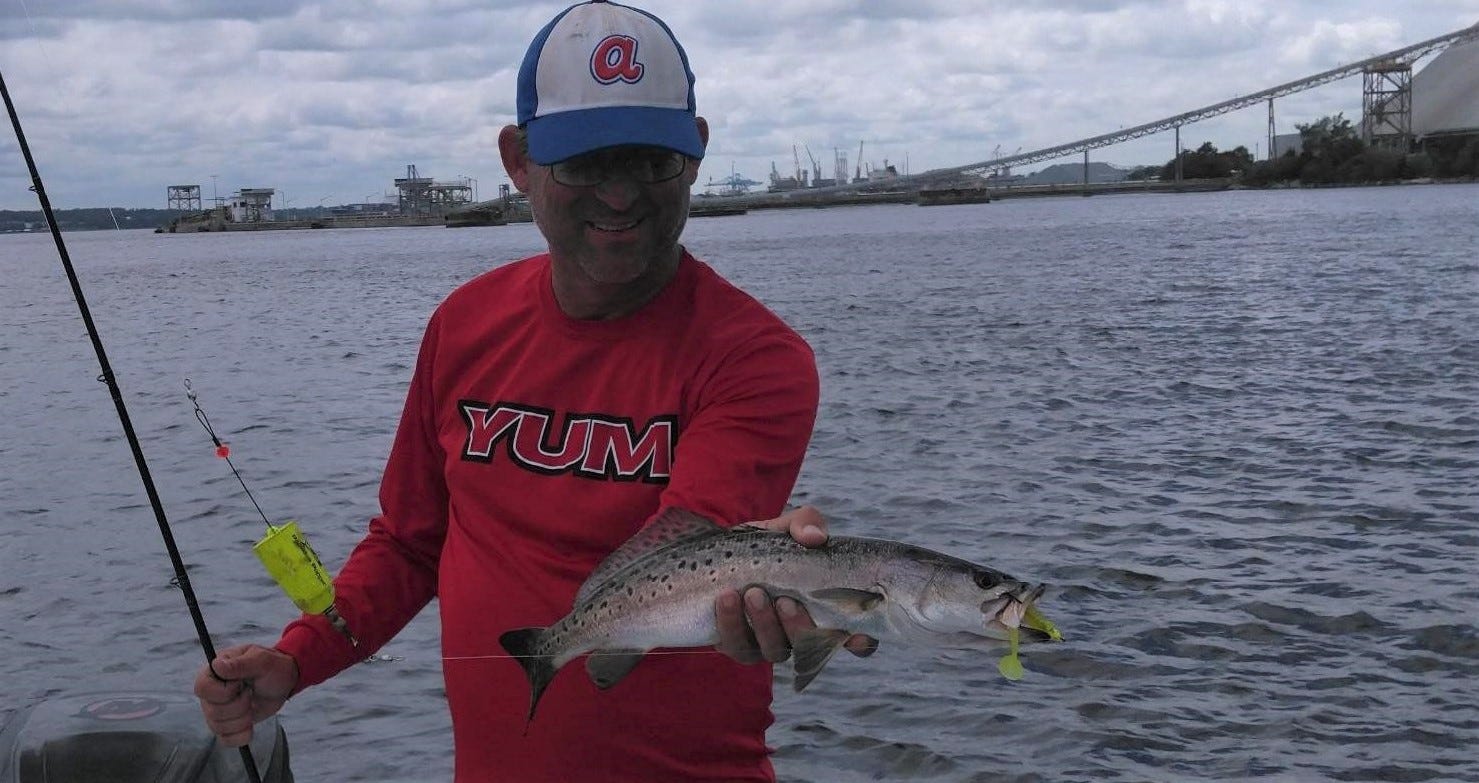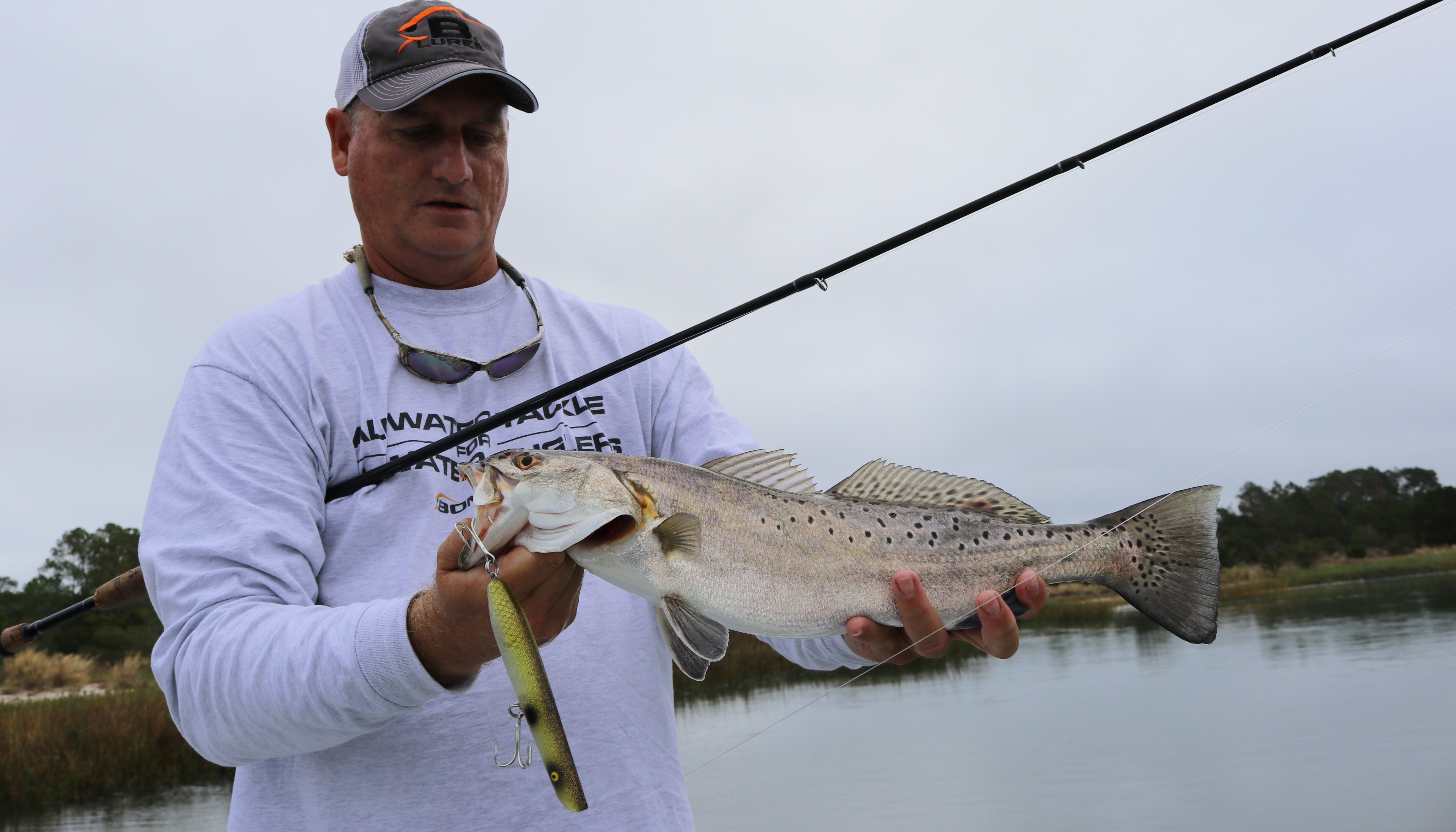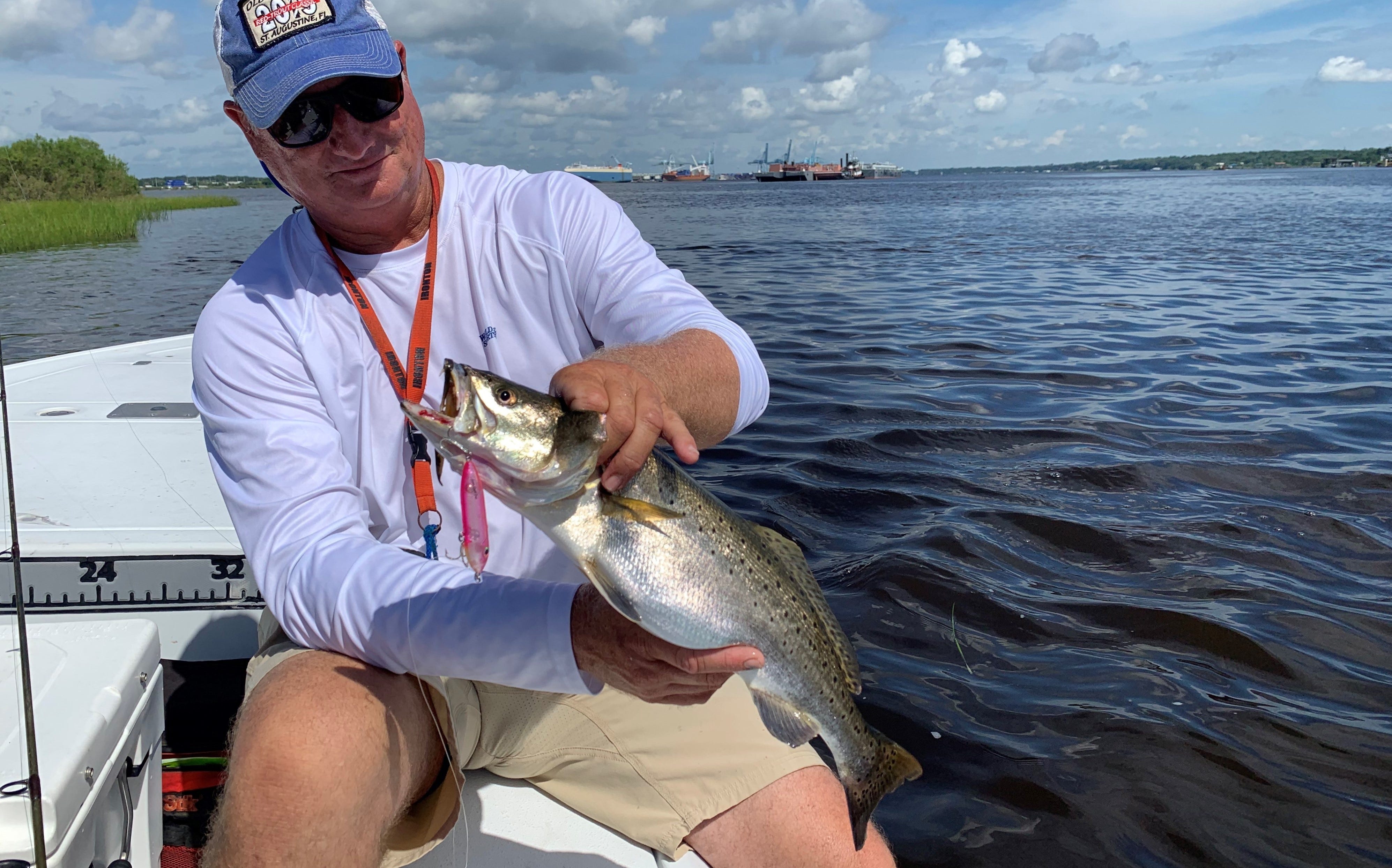- Sep 17, 2021
Topwaters and Popping Corks for Outstanding Inshore Action
Splashy surface lures and rattling corks call in fish, allowing you to cover more range. Use this lethal 1-2 punch for redfish, speckled trout and more.
“Topwater should be good here,” Chris Holleman said, as he put down the trolling motor and eased into a cut. The bottom was shallow and snaggy, with a mix of shell and downed trees, and those snags typically hold snook and redfish, Holleman has found, and the tide had good movement to put the fish in feeding mode.
My second cast with a Super Spook Boyo confirmed the suspicions of Holleman, who operates Blue Cyclone Fishing Adventures in Jacksonville.
Having redfish and speckled trout violently attack topwater lures is extraordinarily fun. Anyone who has sampled this action knows that. Topwater virtues extend past being an extra exciting way to catch fish, though. In many situations, a noise surface lure provides the finest option for working an area and prompting strikes, and at times the topwater lures produce larger fish than subsurface offerings.
Similarly, a rattling popping cork, such as a Bomber Paradise Popper X-treme, calls fish from far away and draws interest. However, the soft plastic bait or natural offering suspended beneath the cork offers an easy-looking meal and no need for an aggressive surface attack.
A topwater lure and popping cork rig, fished as a team, cover an extraordinary range of situations for fishing marshes, tidal creeks, bays and other inshore waters. This duo will produce a variety of species, but redfish and speckled trout are the main attractions in inshore waters from Virginia to Texas
Topwater Lures


A topwater lure provides advantages over most other offerings. First, it gets fish’s attention with surface movements, splashes and at times rattling sounds, and often calls fish from afar. Next, it suggests a batfish or shrimp that is fleeing a predator, which triggers a competitive instinct in gamefish. Also, because a topwater lure by nature stays on the surface, you can fish it effectively over oyster bars, downed trees and other shallow cover that would snag other kinds of lures.
Topwater lures tend to be extra good over shallow cover or structure, in the surf and around fish that are chasing bait on the surface. Don’t limit yourself, though. The more you throw topwater in all sorts of inshore settings, the more you’ll realize that fish will come up from deeper than you’d expect and in places you might not associate with a topwater approach.
Walk-the-dog lures, like Heddon Spooks of various sizes and Bomber Badonk-A-Donks are the most popular picks for inshore applications and Holleman’s most common choice. A walker allows you to cover water effectively, and the rhythmic side-to-side movement and rattles coax fish into attacking.
A popper works well for casting tight to cuts in grasslines, dock supports, stick-ups or other cover, and can make a lot of noise without moving far from the cover. Heddon Chug’n Spooks and Cotton Cordell Pencil Poppers combine the virtues of walkers and traditional poppers. You can work one slowly, as a popper, close to cover. However, you can also walk the dog, so it darts back and forth, spitting and chugging as it goes.
Two important topwater variables are lure size and cadence. For size, important considerations are the size of any baitfish you see and the amount of visibility. Generally speaking, more chop or color in the water and darker skies dictate a larger topwater lure while opposite conditions demand that you go smaller. As for cadence, it’s usually best to experiment early in a day. Vary presentation speeds, the lengths of sweeps for walking baits and the sharpness of jerks for poppers and pay attention to what the fish tell you.
Know that redfish and other inshore gamefish pull hard and that saltwater and salt air can be hard on hooks. Choose lures that are designed for saltwater, with sufficiently heavy saltwater-grade hooks, or change out the lure’s treble hooks. Thankfully, the best saltwater colors in many lures are made with these kinds of fish in mind and come stock with good saltwater hooks.
Popping Corks


Popping corks offer the fish-calling virtue of a topwater lure, but fish need not commit to feeding on the surface. They allow you to control the depth of an offering and fish it very slowly (even almost stationary) to keep it in front of the fish. Popping cork rigs are also outstanding for less experienced anglers because – just like fishing for bluegills with bait under a small float – they always know when a fish bites and it is time to set the hook!
Regarding “popping corks,” it’s worth noting that not all are designed to pop. Paradise Popper X-tremes, which are high-quality rattling corks designed specifically for inshore saltwater applications, come in popping and oval shapes. The Popping version has a concave face and chugs or pops like a popping lure when you jerk the rod. That suggests the sound of a feeding fish, and other gamefish come to investigate. The oval versions is more subtle and just pushes out a wake when it is jerked. Both have combinations of glass and plastic beads on wires at both ends to make a fish-attracting clacking sound.
For either style of Paradise Popper, rigging is simple. Tie the swivel in the front to your main line and a section of leader to the back swivel. Complete the rig with either a jig and soft-plastic offering or with and hook baited with a shrimp or baitfish of some sort. Leader lengths average a couple of feet, but leaders as short as a foot can be useful for working shallow areas, and some situations call for longer leaders. Somewhere around 4 feet is about as long as you want to use for the sake of reasonable casting ease.
Presentations are similarly simple. Cast. Snap the rod tip to engage the rattles and splash the cork. Pause. Snap again. Repeat until the cork darts out of sight. Vary the sharpness of twitches and the lengths of pauses and experiment with single pops and series of two or three.
Holleman errs on the side of less popping, using only occasional twitches to call attention to the offering that’s dangling enticingly beneath the cork.
It’s important to emphasize that popping cork fishing does not necessarily require bait. A 3.5-inch YUM Pulse, YUM Spine Craw or a Gene Larew Long John Minnow rigged on a 1/4- 1/8-ounce jighead works exceptionally well and keeps you from having to buy or catch bait, keep it alive or rebait every time a fish bite!
Signs to Watch For


- Slicks – Oily looking spots on the surface often come from fish feeding below.
- Rips – Watch for rough areas of moving water that indicate cover below.
- Drains – On a falling tide, current lines formed by a draining marsh or a smaller creek commonly carry food, and gamefish wait in ambush position.
- Birds -Plentiful herons or pelicans suggest plentiful baitfish in an area. Circling, diving birds, especially gulls, indicate gamefish feeding and pushing bait to the surface.
- Roving Baitfish Schools – Schools of mullet or menhaden are often visible, either as dark spots or as rippled areas, as they move barely beneath the surface.
- Breaking Fish – Best of all. Cast to them and hang on!
NEW Super Spook Boyo


The Super Spook Boyo, new from Heddon Lures, fills a critical niche for topwater fishing and is an outstanding fit for many inshore applications. Only 3 inches long, it matches small baitfish and appeals to fussy fish. However, it has been engineered to cast surprisingly far for its size and it has the same tough construction and hooks as a Super Spook Jr., making a great fit for inshore saltwater fishing. The Super Spook Boyo comes in several “saltwater colors” and those colors are equipped with saltwater hooks.
Learn More About Inshore Fishing
Destination: South Padre Island



